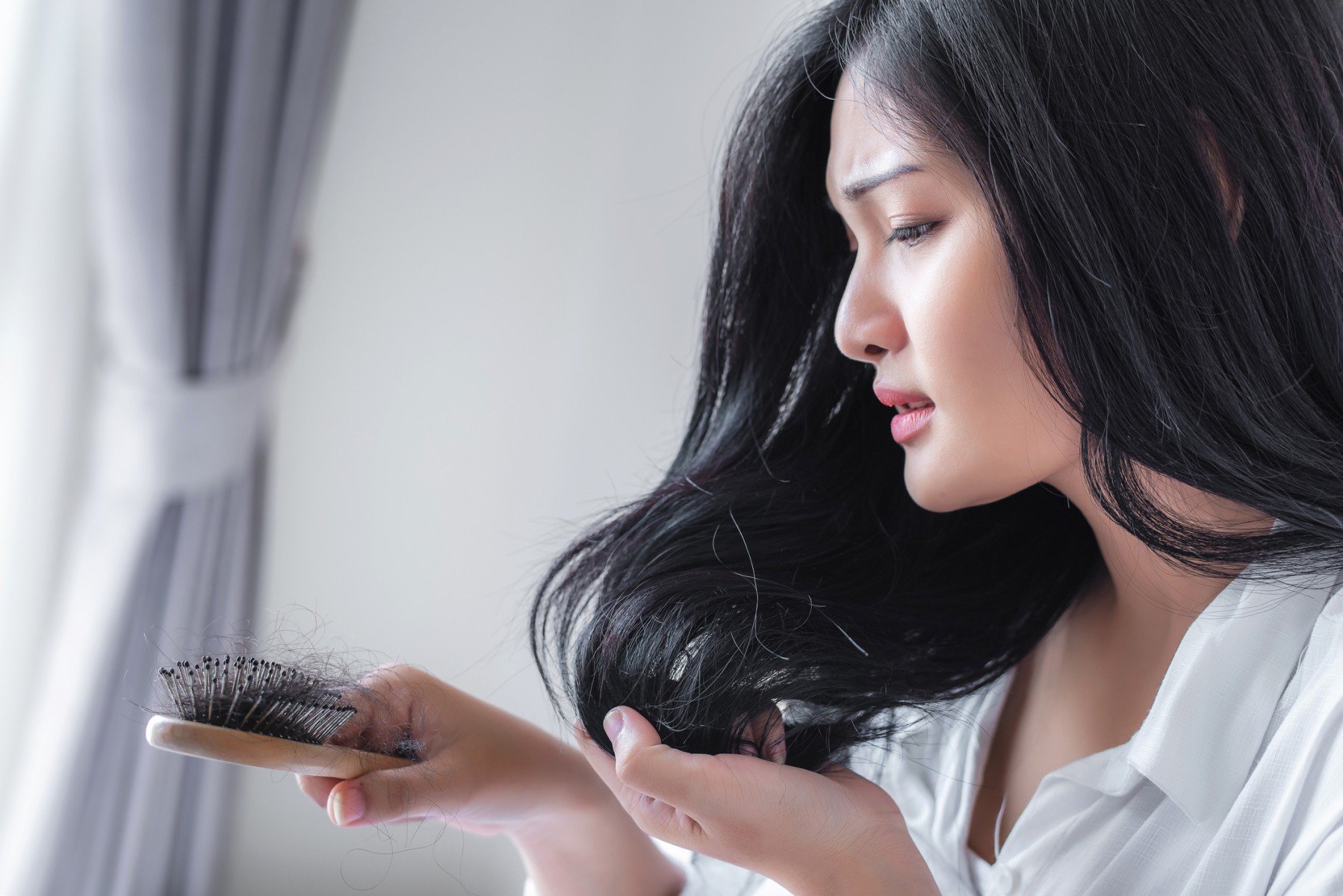Stress-related hair shedding usually happens three months or longer after a triggering event. Experts say it’s not entirely clear why it takes that long, but the body may prematurely push hairs into the dormant phase of their growth cycle, which ultimately leads to the hair root shrinking and falling out.
“I’ve had patients coming in recently with stress-related hair loss, who tell me they were so worried about dying earlier this year or even that they had COVID-19. But they don’t see the effects until three months later,” said Cedars-Sinai dermatologist Ohara Aivaz, MD. “It throws the patient off because the stress has resolved, and yet, the physical manifestation is happening now.”
As the pandemic has worn on, Aivaz and other Cedars-Sinai Medical Group dermatologists have noted more patients are seeking treatment for hair and skin issues caused by increased hand-washing and stress. Patients also are seeking to have more cosmetic procedures because recuperation is easier while staying at home.
The Newsroom spoke with Aivaz about tips for handling these concerns and her take on why some cosmetic procedures have become so popular.
How does the body respond to stress?
In addition to hair loss, Aivaz says stress can trigger flares of acne and dandruff, as well as eczema, particularly among older patients who are more vulnerable to COVID-19 and may have feared for their health and finances.
For eczema, she recommends short, lukewarm showers of 10 minutes or less using fragrance-free soap in the areas most often affected (armpits, groin, feet). But don’t overdo it.
“When skin is really dry, even gentle soap can strip natural oils. Don’t wash something that’s not soiled,” Aivaz said. “Lather soap in your hands, and skip the wash cloth, which also can strip your skin.”
Gently pat skin dry after a shower and moisturize while still damp with a thick cream or ointment. If moisturizing doesn’t help the itchiness, try a drugstore antihistamine, and apply hydrocortisone to rough, raised patches of skin. If there is no improvement after a week, see a dermatologist.
As for hair loss, it’s best to see a professional from the start because shedding could signal a thyroid issue or anemia, and a physician can help rule out those more serious concerns by running labs tests. But if it’s just stress, Aivaz says hair loss supplements and time can help.
“If you remove the trigger and the stress level decreases, the majority of the time hair loss stops on its own, and the patient regrows the lost hair because their follicles are still active and healthy,” Aivaz said.
What’s the best way to soothe “pandemic skin?”
Practicing good hand hygiene is one of the most effective ways to slow the spread of the novel coronavirus. But the increased use of soap or sanitizers can sometimes lead to eczema of the hands, or hand dermatitis, which leaves the skin dry, cracked and red.
Because skipping hand-washing isn’t an option, Aivaz recommends using a fragrance-free soap, warm water that’s not too hot, followed by fragrance-free hand cream after every wash. She notes that it’s important to distinguish between lotions and creams or ointments. Lotion is the thinnest, and cream and ointment are much thicker and better suited to soothe dry hands.
For severely dry skin, consider slathering the hands with Vaseline or Aquaphor at night and covering them with socks or cotton gloves before bed. Drugstore cortisone creams can also help. If not, see a physician for a stronger prescription.
Is this a good time for a cosmetic procedure?
Some patients who now work remotely and have fewer in-person obligations are seeking out cosmetic procedures that can yield temporary scabbing, swelling or bruising.
“Many people have more time at home to look at themselves in the mirror and fixate on imperfections,” Aivaz said. “I see a lot of professionals who normally interact with clients but are now wearing masks much of the time or meeting over Zoom, where it’s easy to hide the effects of minor procedures using clever lighting.”
The most popular treatments include Botox for fine lines on the forehead, around the eyes or between the eyebrows; fillers to restore volume in the cheekbones, in under-eye hollows, in lips, or in the creases around the mouth; and chemical peels and lasers to eliminate acne scars, freckles, rosacea or sun damage.
Read more on the Cedars-Sinai Blog: Dandruff – What It Is and What to Do About It?




